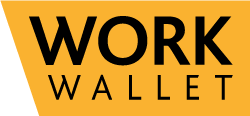What is the Purpose of a Permit to Work System?
14 October 2024

Every organisation that undertakes high-risk work should consider implementing a Permit to Work (PTW) system. Such systems help prevent accidents, mitigate risks, and ensure worker safety. Compliance and worker protection should be top priorities for any company, and an effective PTW system is key to achieving both.
What is a Permit to Work System?
A Permit to Work system is a formal, documented process that helps control certain types of potentially hazardous work. It is a safety management tool designed to ensure work is carried out safely and in a controlled manner, minimising risks to workers, the environment, and the workplace.
PTW systems are used across sectors like construction, manufacturing, and energy. Implementing a PTW system digitally through software streamlines the process, helping companies maintain safety standards more efficiently.
Benefits of a Permit to Work System
Understanding the benefits of a PTW system highlights why it's essential for businesses engaged in high-risk work. A well-designed PTW system allows organisations to:
Identify Hazards
Conduct a thorough assessment before work begins to identify potential hazards and reduce risks.
Implement Controls
Put control measures in place to minimise risks. These measures could include personal protective equipment, engineering controls, or specific safety protocols.
Enhance Communication
A PTW system serves as a communication tool, ensuring that everyone involved is informed of the risks, control measures, and any specific instructions or precautions.
Enable Authorisation
The PTW is a formal authorisation by a responsible authority, such as a supervisor or safety officer, granting permission to proceed with work under specified conditions.
Support Coordination
PTW systems help coordinate work activities, ensuring multiple operations don’t overlap in ways that create additional hazards.
Types of Permit to Work Systems
A PTW system includes various types of permits, each tailored to specific tasks:
- Hot Work Permit: Covers tasks that involve open flames, sparks, or high temperatures, such as welding or torch cutting.
- Confined Space Permit: Required for work in confined spaces where there may be risks of asphyxiation, toxic exposure, or other hazards.
- Electrical Work Permit: For activities involving electrical systems or equipment.
- Excavation Permit: Covers digging, trenching, or similar activities.
- Isolation Permit: For tasks that involve isolating equipment or systems to ensure safety.
What is Permit to Work Software?
Permit to Work software simplifies the management of PTW systems by creating, issuing, and monitoring permits digitally. This centralised platform enhances the safe execution of high-risk tasks, providing an organised way to handle permits with full traceability and efficient workflows.
Key Benefits of Permit to Work Systems
Efficiency and Speed
Digital PTW systems reduce delays associated with paper-based processes, streamlining approvals and keeping high-risk tasks on schedule.
Improved Accuracy and Compliance
Automation minimises errors and helps ensure the recorded data is accurate. Most PTW software aligns with industry regulations, supporting compliance.
Enhanced Communication
PTW software offers real-time updates, centralising communication and increasing transparency across the team.
Data Tracking and Reporting
With digital PTW systems, organisations can track data related to permit usage, incidents, and trends, gaining valuable insights for continuous improvement.
Integration with Other Systems
Many PTW systems integrate with ERP or HSE systems, streamlining safety management processes across the business.
Audit Trail and Security
PTW software includes audit trail features, providing a complete history of changes, and user access controls ensure that only authorised personnel can access sensitive information.
Remote Accessibility
Cloud-based solutions enable remote access for authorised users, which is critical when on-site presence isn’t feasible.
What is a Compliance Management System?
A Compliance Management System centralises an organisation’s processes, files, and documentation, helping it adhere to regulatory standards. A compliance management system can assist with risk assessments, policy management, training, and PTW processes. This reduces risks, ensures staff safety, and helps protect the organisation’s reputation.
Work Wallet’s digital PTW solution offers businesses a comprehensive, user-friendly platform for managing all aspects of permit to work. If you’re ready to simplify permit to work management and enhance safety compliance, Work Wallet’s PTW software is here to support you.
For more information, reach out to Work Wallet’s team to discuss how we can support your permit to work needs.
Share post
More Posts
Why You Need a Contractor Management System
Nov 2024
When managing a complex project, onshore or offshore, it’s essential for both your company and any contractors involved to work...
ESG vs. EHS: What’s the Difference?
Sep 2024
With increasing expectations for businesses to adopt sustainable practices, there’s often confusion about frameworks like ESG and how they differ...




